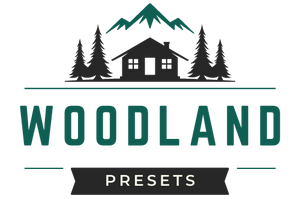Essential Wildlife Photography Tips With Janne Pasanen

Searching for foundational wildlife photography tips you will need when stepping into the field?
Finnish animal and nature photographer Janne Pasanen (jpasanen_wildlife) has spent years turning early-morning walks, hide-tent stakeouts, and long-lens patience into vivid wildlife photography and intimate wild animal photography that feels both cinematic and true to nature.
Drawing on Finland’s forests, lakes, and endless summer light, Janne shares how he plans shoots around natural light, keeps post-processing subtle yet effective, and how anyone can balance a busy life with the restorative power of wildlife photography.
If you’re ready to level up your wild photography, dive into this interview that will get you out the door and into the wild with confidence.

Could you share a bit about your background and how you got started in wildlife photography?
I started photographing nature at a young age with my father's film camera.
After that, work and hobbies took up my time, but in 2018, I found nature photography again.

What draws you to focus primarily on wildlife and nature subjects in your photography?
Because nature and wildlife photography is not just photography.
In nature, the soul and mind rest.
Nature and animals are truly beautiful.
Being in nature is a good counterbalance to busy everyday life.

Finland offers diverse landscapes and wildlife. How does your local environment influence your work?
Yes, you're right, Finland offers diverse landscapes and wildlife.
Of course, here in Finland, different species live in different parts of Finland, so you also have to travel a bit.
Here we have a lot of forests, fields, lakes, and the sea. This makes it easy to draw more depth in the images.

Your images often capture intimate moments with wildlife. What techniques do you use to achieve such close and detailed shots?
I walk around, track animals, and map places a lot. This way, I know where animals can move.
I also have my own photo hide tent where I stay hidden, and also a camouflage outfit.
Then summertime, I just wake up at 3 in the morning and just wait in my place for hours.
Here in Finland, we also have hide places and they cost some money. Sometimes I go to these hides too.
Of course, less often because I'm not a millionaire.

Could you walk us through your typical workflow, from planning a shoot to the final edited image?
I walk and look for good places to prepare, where I can also get nice natural light.
When I find a place, I pack my lunch in the morning and go there early in the morning to prepare for waiting, waiting, and waiting.
I always use manual settings to get the right atmosphere in the raw image.
I edit the basics first, after which I often use your ready-made preset, and finally, I fine-tune everything. (I have a couple of magic tricks, but I can tell everything) 😉

What equipment do you currently use, and how has your gear evolved over time?
My camera is a Sony A7 IV + Sony FE 200-600mm G telephoto zoom lens.
Of course, film cameras have come a long way since then.
The most important features for me are good focus tracking and the camera's ability to tolerate even dim conditions.

Are there any particular challenges you've faced while photographing wildlife in Finland's varying seasons?
Not really. You have to learn to protect yourself according to the weather.
Clothing and being prepared for different conditions are a big and important part of nature photography.

How do you approach post-processing to maintain the natural essence of your subjects?
I'll always try to keep the essence and message of nature in the final image.
There is no right or wrong way to do this. Some of us, like me, have an artistic style. Other photographers want to keep the image very raw.
Nature, nature/wildlife photography, and artistic freedom belong to all of us.

Which photograph are you most proud of, and what's the story behind it?
I can't really single out one image because they are all special in some way.
If there's one thing that should be elevated above others, it's mammals, because they're the subject of countless efforts.
They have many wonderful stories and encounters behind them.

What advice would you give to someone just starting out in wildlife and nature photography?
Be patient. Walk around nature, get to know it, and don't stress about taking pictures.
Nature offers what it offers.
On the technical side, get to know your camera. It makes shooting a lot easier when you know your camera.

Are there any upcoming projects or goals you're excited about in your photography journey?
Yes, there is. I'm going to Finnish north photograph bears and I'm planning a photo trip to Norway.

Where can our audience view more of your awesome work or connect with you online?
You can find me on Instagram www.instagram.com/jpasanen_wildlife
I also have a website www.jpasanenphotography.fi
You can contact me on both channels.
Bonus question: Anything you’d like to share about yourself or your work that we didn’t cover?
If you would like to support me or collaborate with me, please feel free to contact me.
Thanks for reading! Janne's story shows that real progress in wildlife photography starts with patience, curiosity, and field-tested wildlife photography tips you can try on your next walk through the woods.
From mapping tracks and setting up a hide to mastering manual settings, this self-taught wildlife photographer proves that powerful wild animal photography is possible with a simple kit and a deep respect for nature.
Special thanks to Janne for taking the time to share his story. He’s been part of the Woodland Presets community since 2023, and we’re genuinely grateful to have him still creating, sharing, and inspiring alongside us.
Liked this interview? You might also like these.
How this birder learned to take sharp bird photos in under 2 years, and how you can too
Finding your style in nature photography: Learn how this moody macro photographer developed hers,




Leave a comment